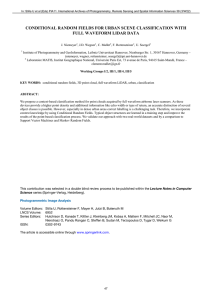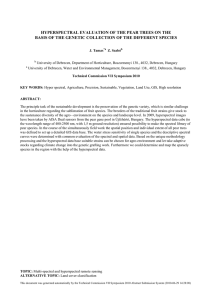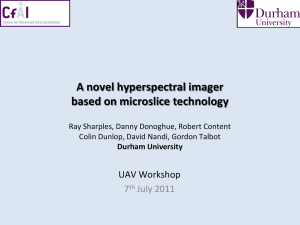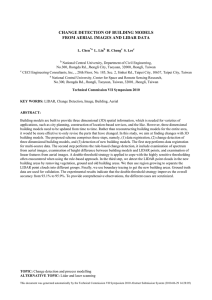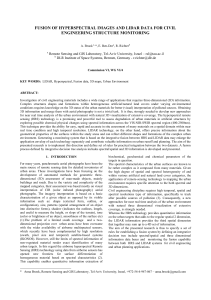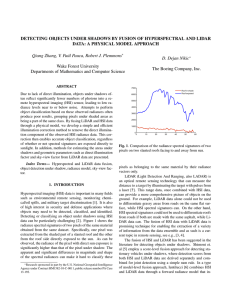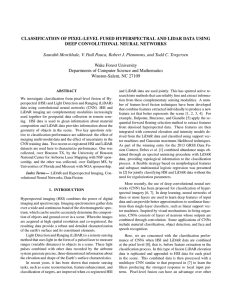FUSION OF FULL WAVEFORM LIDAR DATA AND
advertisement
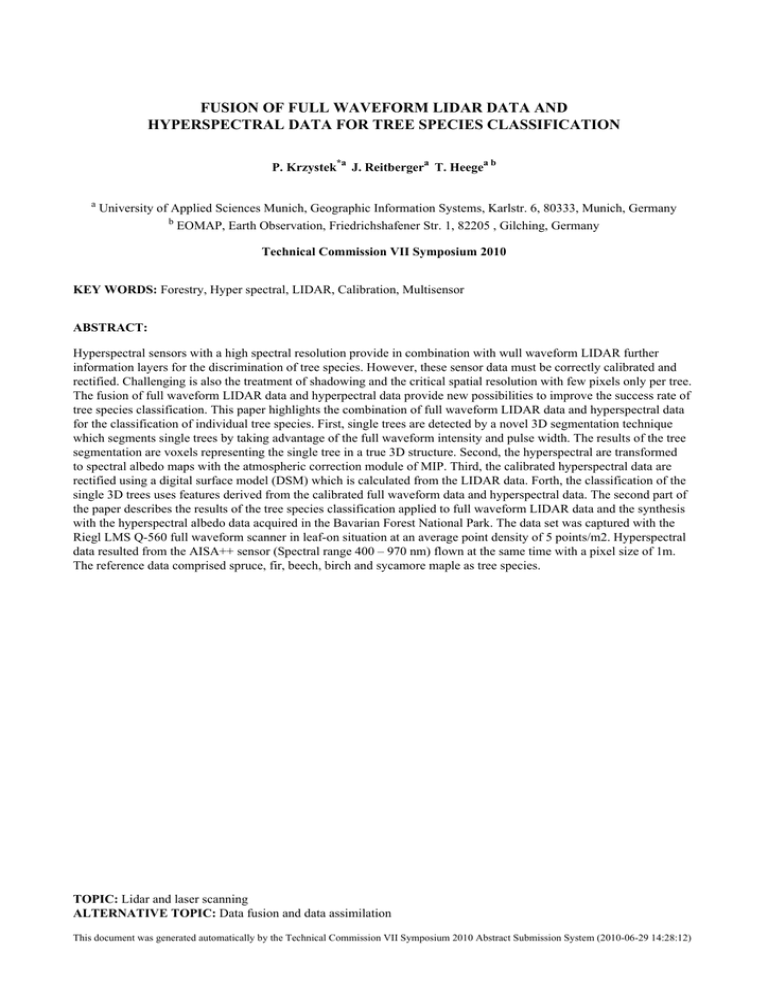
FUSION OF FULL WAVEFORM LIDAR DATA AND HYPERSPECTRAL DATA FOR TREE SPECIES CLASSIFICATION P. Krzystek*a J. Reitbergera T. Heegea b a University of Applied Sciences Munich, Geographic Information Systems, Karlstr. 6, 80333, Munich, Germany b EOMAP, Earth Observation, Friedrichshafener Str. 1, 82205 , Gilching, Germany Technical Commission VII Symposium 2010 KEY WORDS: Forestry, Hyper spectral, LIDAR, Calibration, Multisensor ABSTRACT: Hyperspectral sensors with a high spectral resolution provide in combination with wull waveform LIDAR further information layers for the discrimination of tree species. However, these sensor data must be correctly calibrated and rectified. Challenging is also the treatment of shadowing and the critical spatial resolution with few pixels only per tree. The fusion of full waveform LIDAR data and hyperpectral data provide new possibilities to improve the success rate of tree species classification. This paper highlights the combination of full waveform LIDAR data and hyperspectral data for the classification of individual tree species. First, single trees are detected by a novel 3D segmentation technique which segments single trees by taking advantage of the full waveform intensity and pulse width. The results of the tree segmentation are voxels representing the single tree in a true 3D structure. Second, the hyperspectral are transformed to spectral albedo maps with the atmospheric correction module of MIP. Third, the calibrated hyperspectral data are rectified using a digital surface model (DSM) which is calculated from the LIDAR data. Forth, the classification of the single 3D trees uses features derived from the calibrated full waveform data and hyperspectral data. The second part of the paper describes the results of the tree species classification applied to full waveform LIDAR data and the synthesis with the hyperspectral albedo data acquired in the Bavarian Forest National Park. The data set was captured with the Riegl LMS Q-560 full waveform scanner in leaf-on situation at an average point density of 5 points/m2. Hyperspectral data resulted from the AISA++ sensor (Spectral range 400 – 970 nm) flown at the same time with a pixel size of 1m. The reference data comprised spruce, fir, beech, birch and sycamore maple as tree species. TOPIC: Lidar and laser scanning ALTERNATIVE TOPIC: Data fusion and data assimilation This document was generated automatically by the Technical Commission VII Symposium 2010 Abstract Submission System (2010-06-29 14:28:12)
